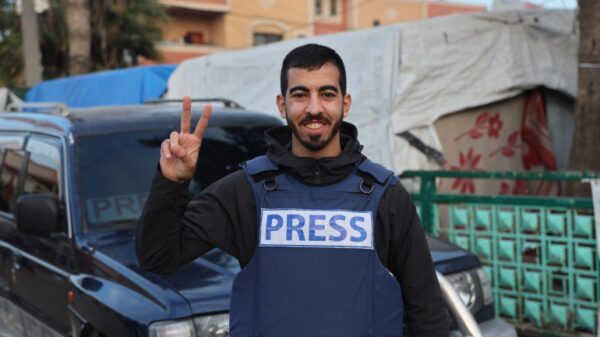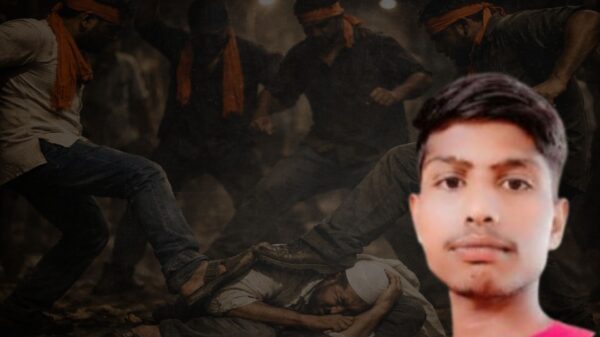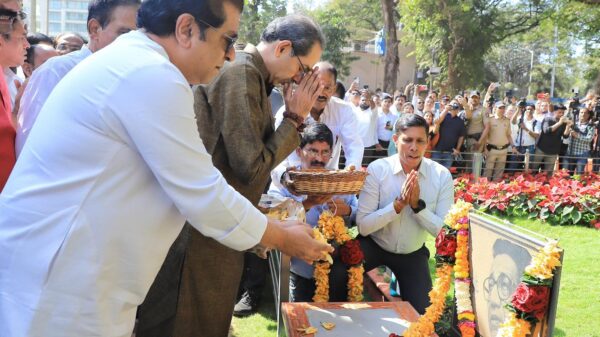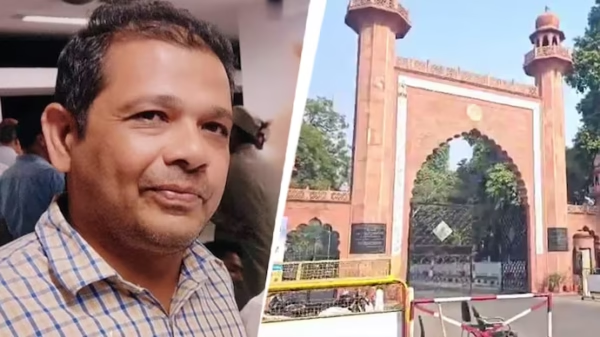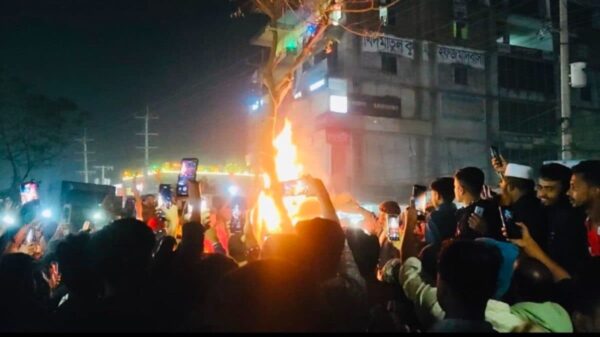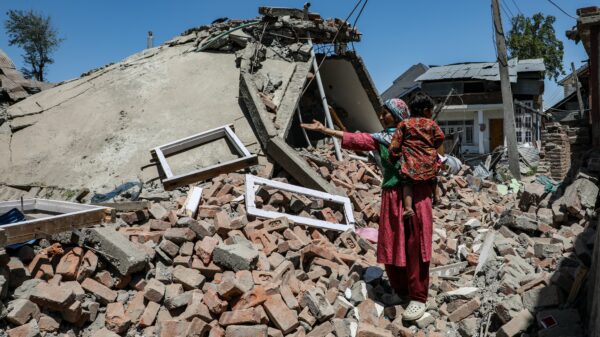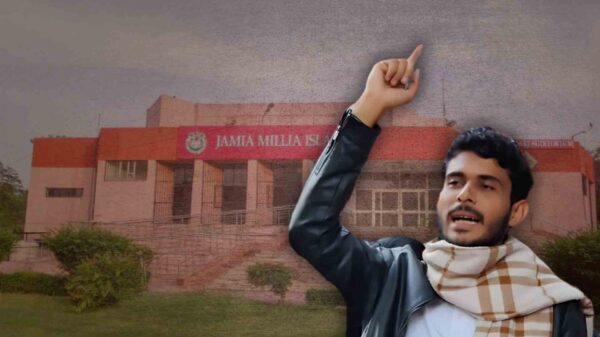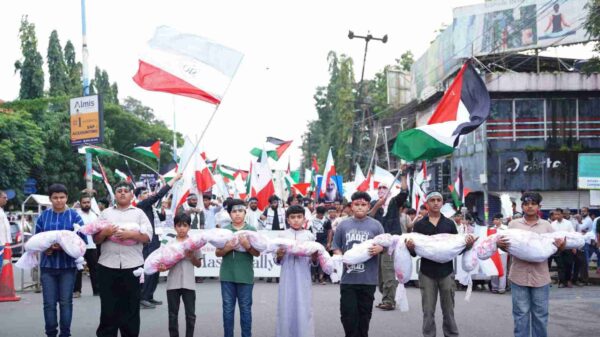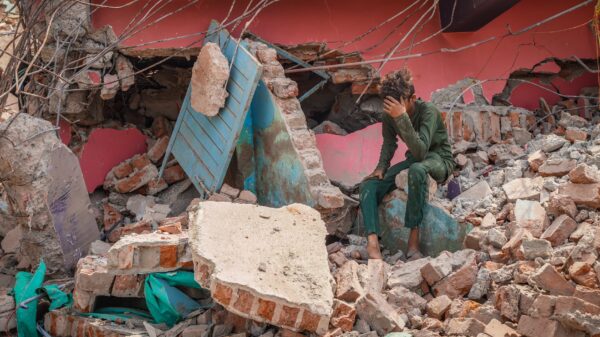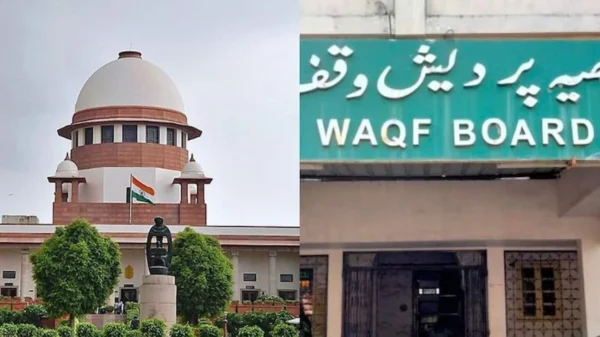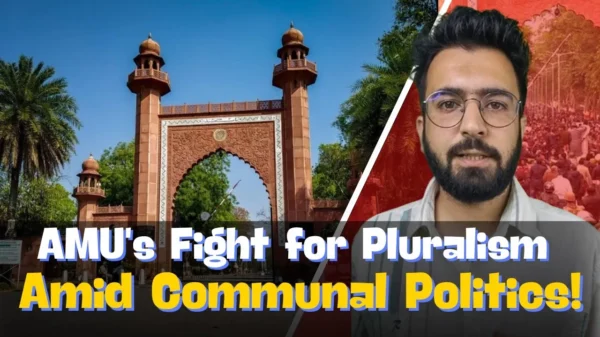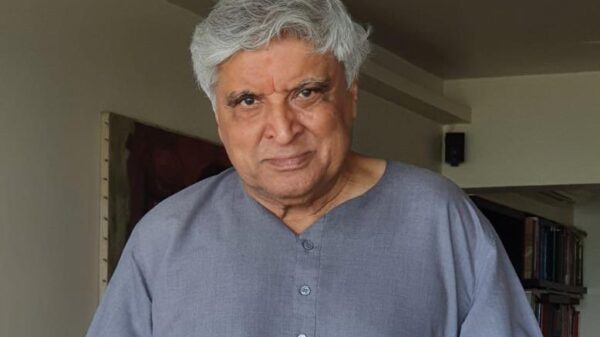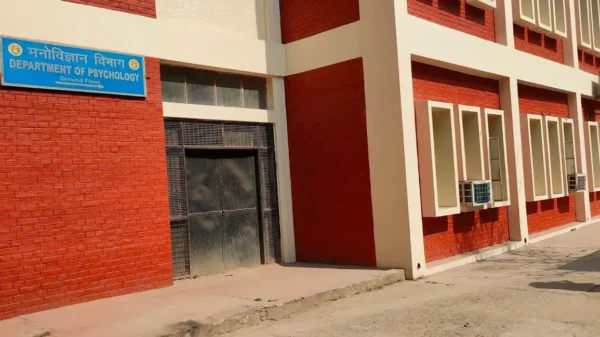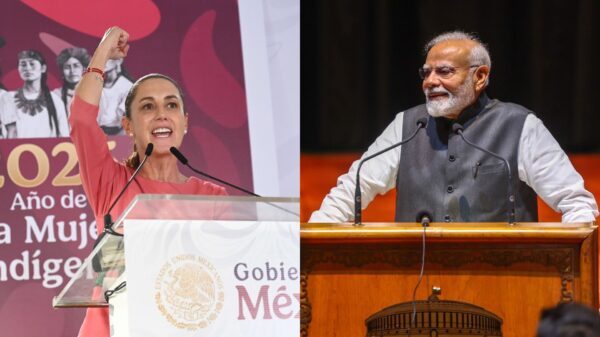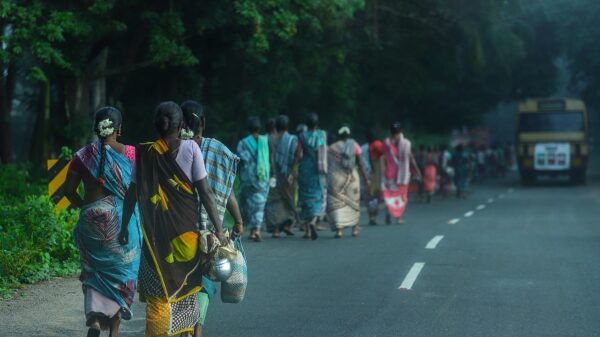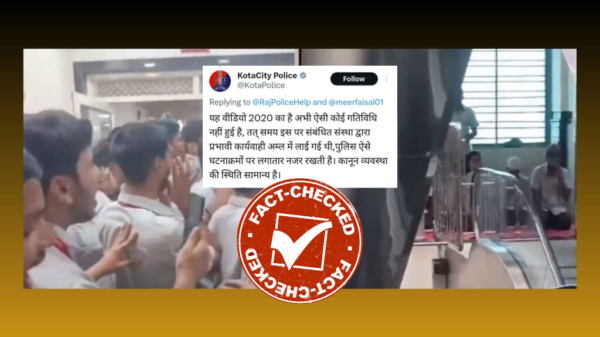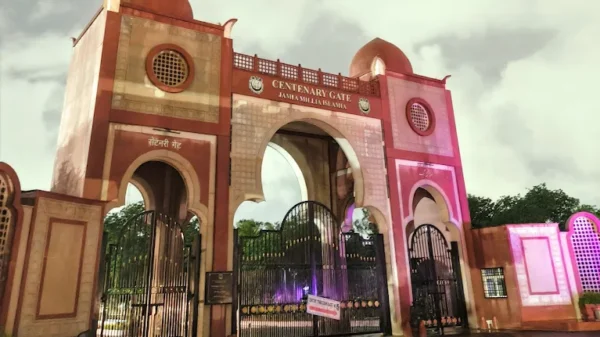MD ALI
“Santosh iss Desh me do tarah ke chhua chhut hain. Ek wo jise koi chhuna nahi chahta, aur dusre wo jise koi chhoo nahi sakta.” (There are two types of untouchables in this country: those whom people don’t want to touch, and those who cannot be touched.) This dialogue stands out as the film’s most entrenched and evocative line, capturing its core theme. Ironically, it may have contributed to the film’s ban from Indian theatres, potentially leaving the regime underwhelmed.
Santosh, a 2024 globally acclaimed British-Indian film, was denied certification for theatrical release by the Central Board of Film Certification (CBFC), citing scenes of police brutality, caste discrimination, and misogyny. The film is written and directed by British-Indian documentary filmmaker Sandhya Suri. It follows the investigation into the rape and murder of a Dalit girl. While structured as a procedural drama, the film serves as an allegory that not only highlights centuries-old caste oppression but also exposes deeply embedded institutional Islamophobia. In the film, Muslims can be seen as “second Dalits,” subjected to additional layers of hatred. However, the film resists slipping into a simplistic, formulaic narrative and instead gracefully explores the complex grey areas of human psychology and structural functionalism.
Santosh gouges into the uneven surface of Indian society
The protagonist, Santosh (played by Shahana Goswami), inherits her husband’s job after he is killed on duty during a communal clash. Reluctantly, she joins the police force in the fictional province of Chirag Pradesh, after her in-laws turn hostile. Through Santosh’s eyes, the audience is introduced to the decaying infrastructure, a deeply corrupt system, and even the crumbling building of the police station itself.
It would be inaccurate to call the film rigidly feminist, yet it centers on a female police officer trying to do what is right while constantly negotiating between her personal agency and self-preservation. She doesn’t solicit bribes, but when a young couple in a park hands her a ₹500 note to avoid trouble, she accepts it—only to later give it to the driver of a private vehicle who brought the body of a young girl for postmortem. Santosh clings to the hope that justice will prevail, but never at the cost of her own survival.
In one powerful scene, she slaps a protesting woman after the latter spits on her. This moment was drawn from a real incident during the 2012 Nirbhaya rape and murder protests. Director Sandhya Suri, initially working on a documentary about sexual violence against women in India, shifted to fiction after witnessing the grim and chaotic reality firsthand. She was particularly struck by an image of a female protester spitting on a woman constable. That moment became the emotional genesis of Santosh—a story told from the perspective of a female constable caught between duty and public anger.
In an interview with The Hollywood Reporter, Suri said of the character: “She’s a perpetrator, she’s a victim. She experiences power, but she’s also powerless.”
The film is set against the backdrop of urban dislocation, in a region dominated by upper-caste strongmen whose unchecked power is enforced by officials within the administration. The only water source available to the Dalit community—a well—is often desecrated by the secret dumping of animal carcasses, a grotesque reminder of the everyday violence inflicted upon them, routinely ignored and denied.
Santosh tries, often reluctantly, to conform to a system that was never built for her. She is visibly anxious when Saleem is tortured; she eats samosas while his screams echo from the next room. Her mind and soul are at odds, as she acts under orders. A chilling juxtaposition of complicity and helplessness emerges when, overcome by fury, she begins to beat Saleem herself. Throughout the film, the predominant color is grey—nobody, not even the protagonist, is wholly righteous.
The film tries to speak the mind of those who fear to voice their hearts. The custodial killing was publicly framed as swift justice—an appeasement cake for the enraged public. Santosh, who later learns the truth, is constantly tormented by guilt. Her senior and investigative officer (Sunita Rajwar) advises her, “Duniya ki nazar mein to unhein insaaf mil hi gaya na” (“In the eyes of the world, justice has been served—hasn’t it?”).
In the climax, when an inquiry is set up into the case, Sunita Rajwar, who also harbors an erotic desire for Santosh, tries to enlighten her by saying, “Santosh, is desh mein do tarah ke chhua-chhut hain. Ek woh jise koi chhoona nahi chahta, aur doosra woh jise koi chhoo nahi sakta.” (“There are two types of untouchables in this country. Those whom no one wants to touch, and those who cannot be touched.”)
This dialogue is perhaps the film’s most entrenched and evocative thematic element and may have contributed to its ban from Indian theatres. It is neither cryptic nor ambiguous but a clear indictment of a society where even those aware of injustice remain unwilling to challenge the status quo.
The movie is not a didactic melodrama, nor does it seek to appease victims; instead, it portrays them with objectivity. The Muslim locality is depicted as less downtrodden but equally oppressive—a claustrophobic, ghettoized society. The spatial depiction of cramped rooms, which the dispossessed call home, intensifies the film’s core realism. The meticulous attention to detail is evident in the makeup and costumes, which vividly reflect both the characters’ social states and psychological conditions.
There are moments in the film where misogyny seems to dissolve into the air. In one scene set in a restaurant, Santosh vomits the chewed food to avoid a man’s constant, piercing gaze. That particular scene is charged with defiance and is aesthetically unsettling. The film contains engrossing elements where the performers slip seamlessly into their roles, blurring the line between performance and reality.
Santosh’s acclaim could not prevent its ban from theatrical release
The film garnered recognition at prestigious film events. Santosh premiered at the Cannes Film Festival, was the U.K.’s official entry for the Oscars’ International Feature category, and earned a BAFTA nomination for Best Debut Feature. Shahana Goswami won Best Actress at the Asian Film Awards for her role in the movie. Despite these achievements, the film was banned from release in Indian theatres. Director Sandhya Suri described the decision as “heartbreaking.”
Films aligned with the current national power receive tax waivers and political endorsement
Films that align with the current national government’s narrative have often been praised, favored, and rewarded with tax exemptions—particularly in BJP-ruled states. According to a BBC report, Nadav Lapid, jury chief at the International Film Festival of India (IFFI), criticized the inclusion of The Kashmir Files (2022) at the event. Describing the film as “propaganda,” he said he was “shocked” that it was included in the competition category. Though the film has been widely labelled divisive, it is noteworthy that all the states where Vivek Agnihotri’s directorial was granted tax-free status are governed by the BJP. The greatest irony is that the film won the National Award in the category of the Nargis Dutt Award for Best Feature Film on National Integration.
Similarly, Randeep Hooda’s biopic Swatantrya Veer Savarkar, released on March 22, 2024—just a month before India’s general elections—portrays the early 20th-century Hindu nationalist ideologue Vinayak Damodar Savarkar and controversially holds Mahatma Gandhi responsible for India’s delayed independence. Prime Minister Narendra Modi is known to be a great devotee of Savarkar.
Vipul Amrutlal Shah’s 2023 production The Kerala Story sparked immense controversy for its divisive and blatantly Islamophobic narrative, built on misleading and unverified claims—criticisms that were raised as early as the teaser’s release. According to Hindustan Times, the BJP-led governments of Haryana, Uttar Pradesh, and Madhya Pradesh declared the film tax-free, with strong support from senior BJP leaders, including Prime Minister Narendra Modi, who publicly endorsed the film and urged other states to do the same. However, the Supreme Court of India later directed the filmmakers to add a disclaimer clarifying that The Kerala Story is a “fictionalized account of events” and that there is no “authentic data” to support the claim that 32,000 women were converted to Islam.
The very next cinematic venture by the same makers took the myth-making and selective framing even further—fortifying an echo chamber of ideological predisposition. The trailer itself featured a fiery dialogue from the protagonist, openly calling for the killing of students at Jawaharlal Nehru University (JNU). Despite such an incitement to violence, the film faced no significant obstacles in securing a theatrical release.
Sabarmati Report, a film based on the Sabarmati train burning that preceded the 2002 Gujarat communal riots during Narendra Modi’s tenure as Chief Minister, has been widely praised and even had a special screening inside the Parliament building. Prime Minister Modi, along with a group of ministers, attended the screening. Applauding the film on X, Modi wrote, “It is good that this truth is coming out in a way that is accessible to everyone. A fake narrative can only last so long—facts eventually prevail.” The film was also declared tax-free in six BJP-ruled states.
In stark contrast, films and documentaries that critically examine state power or assert uncomfortable truths about systemic oppression often face censorship. They struggle to secure theatrical releases and are frequently barred from digital platforms such as OTT services and YouTube. In 2023, the BBC documentary India: The Modi Question—which scrutinized Modi’s role during the 2002 Gujarat riots—was banned in India under emergency provisions of the country’s Information Technology laws.
The Systematic Strangulation
Before 2021, if the Central Board of Film Certification (CBFC) censored a film or ordered arbitrary cuts, filmmakers had the option to appeal to the Film Certification Appellate Tribunal (FCAT). However, that recourse was eliminated when the central government dissolved the FCAT through the Tribunal Reforms (Rationalization and Conditions of Service) Bill, 2021. Established in 1983 as a statutory body under the Cinematograph Act of 1952, the FCAT heard appeals from filmmakers aggrieved by CBFC decisions. With its dissolution, filmmakers now have only one legal route left: to approach the High Court—a far more time-consuming and resource-intensive process.
This shift can be understood through Michel Foucault’s framework in Discipline and Punish: The Birth of the Prison (1975), which explores mechanisms of social control and dominance. Foucault describes how power becomes internalized and routinized, transforming into unquestioned norms. He calls this “normalizing power,” where surveillance, discipline, and categorization render domination invisible—because it is absorbed into what society perceives as “normal.”
Films Banned Under the Modi Government
Santosh is not the only casualty of the growing culture of censorship facilitated by agencies under the central administration. Several films and documentaries—especially those with a critical tone—have met similar fates. This systematic silencing of cinematic dissent, paired with overt support for films that echo the ruling party’s ideology, is not unprecedented but serves as a resolute affirmation of propaganda through popular culture.
Below are some examples:
- En Dino Muzaffarnagar (Documentary on the 2013 Muzaffarnagar riots)
Refused clearance by the CBFC shortly after Narendra Modi took office, making it the first documentary banned under his regime. The ban was later overturned by the Delhi High Court. - Anthem for Kashmir (Short film on human rights in Kashmir)
In 2022, the Indian government directed YouTube to block this short film via a legal notice from the Ministry of Electronics and Information Technology, citing concerns over national security. - India: The Modi Question (BBC documentary, 2023)
This two-part series critically examined Prime Minister Modi’s role during the 2002 Gujarat riots. It was officially banned in January 2023, with instructions issued to social media platforms and streaming services to take it down under emergency IT rules. - Kisan Satyagraha (Documentary on the 2020–21 farmers’ protests)
Scheduled to be screened at the Bangalore International Film Festival in March 2024, it was pulled following instructions from the Ministry of Information and Broadcasting, which labeled it “sensitive” subject matter.
The Fear of Banality and the Absence of Resistance
The censorship of films—even those not explicitly critical of any political party or ideology, like Santosh—reveals the unyielding grip of those who control the power dynamics. These gatekeepers hide and sanitize uncomfortable realities, driven by their own complicity in perpetuating systemic injustices.
Yet, what is perhaps most alarming is the growing banality of such censorship. The mainstream film fraternity appears largely indifferent or resigned to this creeping normalization. This complacency risks turning suppression into an unquestioned norm.Michel Foucault’s Discipline and Punish: The Birth of the Prison (1975) offers a profound insight into this phenomenon. He describes how social control becomes internalized and routinized, shifting into norms that society no longer questions. This “normalizing power” operates through surveillance, discipline, and categorization, rendering domination invisible—because it becomes embedded in what people perceive as “normal.”
The views expressed in this article are author’s own and do not necessarily reflect the policy of the platform.


